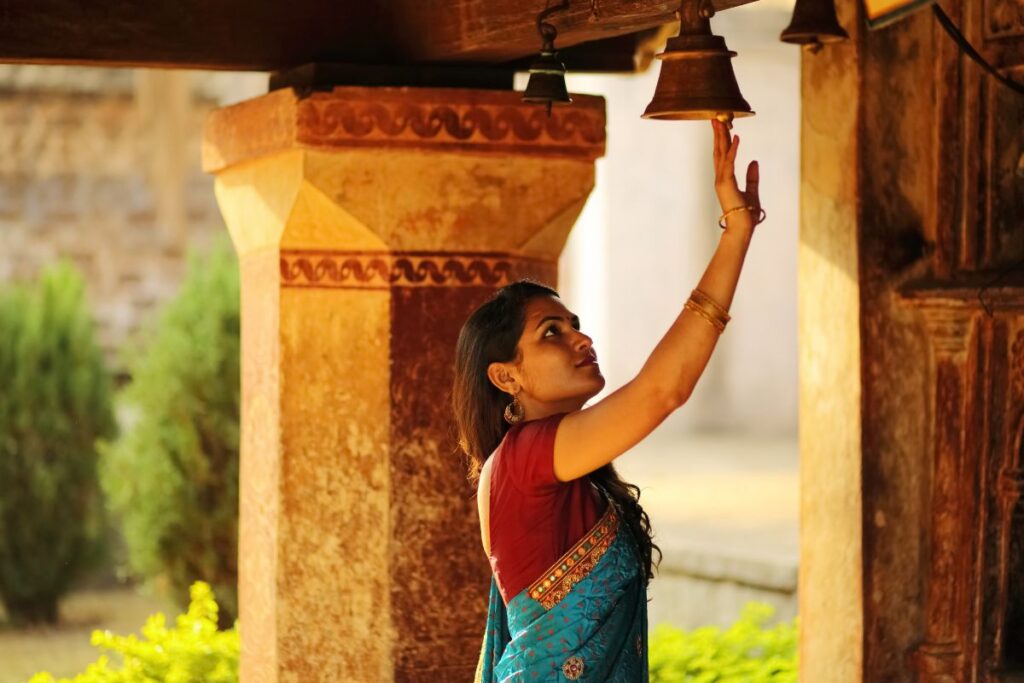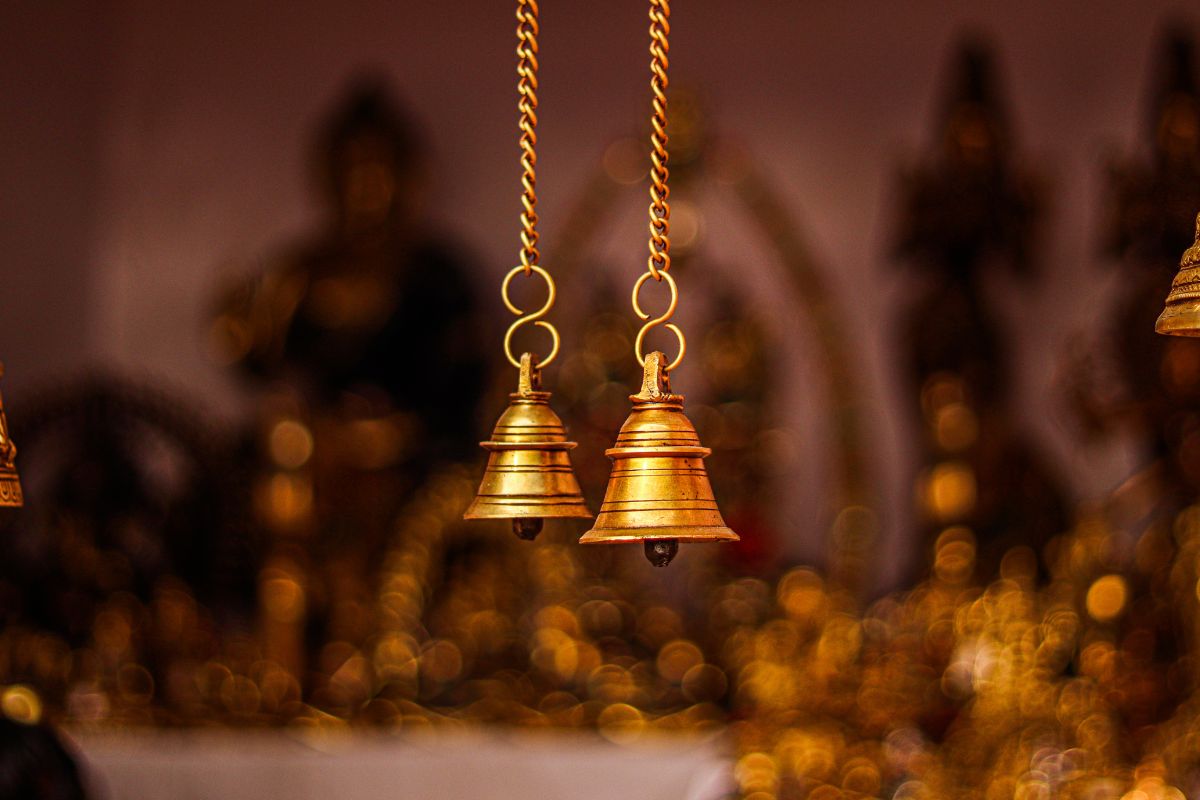Why do temples have bells ?
Ancient Indian wise men discovered long ago that rhythmic sound works as an effective cleanser of negativity and restores energies. Therefore, ringing of the temple bell and gong at the time of arati in the morning and evening was made an integral part of daily rituals in temples.

Though some people go to temples to offer their pure selfless prayer, most visit temples to seek solace for their grieving, hard times, mental agony, diseases or the unrest in their hearts. After their prayers, when leaving for their homes, they leave behind a lot of negativity in the temple area. Therefore, regular cleansing of the temple space is done twice daily at sunrise and sunset by ringing the bell and gong together with blowing of the conch. In south Indian temples it is done through music. There, at the time of arati, nadaswaram and drums are played.

Collective chanting of mantras aloud, reciting names of gods and singing their bhajans also help to restore the lost energy of the temple space. In homes, it can be achieved by playing a CD of healing mantras, ringing of bell, or using singing bowls particularly in corners where negativity harbours the most. This helps immensely in creating good vibes and in driving negativity out of the walls of a house. Rhythmic sound is the best way to flush out negative energies from any sick structure. It is often experienced that one feels uncomfortable and uneasy when one goes to such a house where prolonged illness has existed or to a hospital where diseases have a natural dwelling, or to a police station, where negative thoughts and emotions find an abode. In these places negativity enters deep and gets accumulated in their walls. Regular and sustained clearing of such places by playing soothing music helps replenish their sapped out energy.
Besides sound, light and air also work as uplifters of positive chi. Most traditional temples are built facing the east for natural light. Burning of incense sticks also purifies space. That is why dhoopbatti and agarbatti are lit in temples and homes.


Comments are closed.